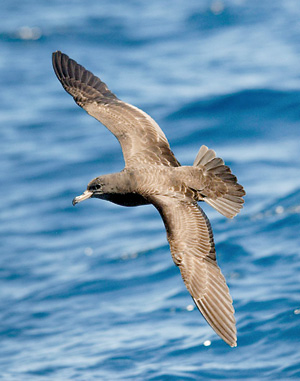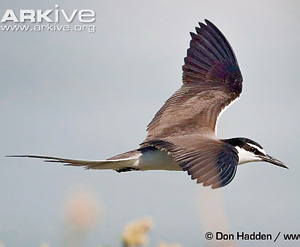News
This is the season to watch migratory seabirds
View(s):Sri Lanka enjoys many wildlife spectaculars, including the phenomenon of the annual mass migration of hundreds of thousands of seabirds. “August-September is the best time to observe the great mass migration of seabirds. During the peak in September as many as 3,000-4,000 bridled terns (Sterna anaethetus) fly southwards within sight of shore in one hour,” reveals Rex I. De Silva who has studied this fascinating phenomena over many years.
 In a good year, approximately half a million bridled terns will fly southwards during the daytime. Many seabirds take part in long annual migrations, crossing the equator after the breeding season. As many as 50 different species of seabirds have been recorded in Sri Lanka.
In a good year, approximately half a million bridled terns will fly southwards during the daytime. Many seabirds take part in long annual migrations, crossing the equator after the breeding season. As many as 50 different species of seabirds have been recorded in Sri Lanka.
At present the area (or areas) of origin of the migrating brindle terns is not known, nor is their ultimate destination. It is suspected that the migration is a post-breeding dispersal of birds nesting in possibly the Red Sea and the Arabian Sea, in Makran on the coast of Pakistan, and the Maldives, Mr. De Silva said.
A less spectacular but equally interesting sight in September and October is the southward migration of flesh-footed shearwaters (Puffinus carneipes). According to Mr. De Silva, these birds leave their breeding grounds in south-west Australia each May and embark on a lengthy “continuous migration” which takes them north and west to the Arabian Sea and thence southwards past Sri Lanka, back to their homes in time for the next breeding season. Shearwaters never approach closer than about 1.5km from land and detailed observations are conducted out at sea.

Bridled-tern-in-flight (c) Don Hadden
The best season for seabird-watching is during the south-west monsoon (usually May-October). Other than the brindled tern, this is also an opportunity to observe several other seabird species such as the wedge-tailed shearwater, Wilson’s storm-petrel, lesser frigatebird, brown skua, pomarine skua, brown noddy and lesser noddy.
Land-based watching can be carried out from practically anywhere on the western coast. Especially favourable locations are Talawila, Chilaw, Negombo, Colombo and its coastal suburbs, Beruwela, Bentota, Ambalangoda, Hikkaduwa and Galle.
The western coast is primarily of low elevation, few places having altitudes in excess of 50m, and these low coastal regions are ideal for studying the seabird migrations as the birds usually are low-flyers, hence a telescope at sea level will show more of the movement than would observation from a higher site.
| Alarm as global seabird population plummets A recent study analysing data of 162 seabird species from 1950-2010 revealed the populations have reduced by 70 per cent. Seabirds are also considered as indicators of marine habitats, so this also rings alarm bells about the states of world’s ocean, the scientists say. It is feared that the uncontrolled collection of fish from the ocean has left seabirds less food and thst this could be one reason for the decline in numbers. Seabirds are usually migratory birds, so if one area in their flyway is affected the population can drop even though the environment is sound elsewhere. This is a problem faced by all migratory species. Seabirds usually breed in colonies densely packed during the egg-laying breeding season. Several sand islands of Adam’s Bridge, which links Jaffna to India’s Rameswaram, are famous seabird breeding grounds. The third island from Mannar is special as it is used by thousands of seabirds for breeding. The island is less than 5ha but researchers found seven species of terns breeding there, building nests on the sand. Of these, six are listed as endangered species since this island is the only known breeding site in Sri Lanka for them. It is reported that the eggs are sometimes collected by the villagers and even unwary tourists could disturb this breeding colony. These islands have been declared as national parks, giving them protection. Conservationists urge that this protection should be enhanced to the level of “Strict Nature Reserve”, where access to the island would be permitted only for scientific purpose. | |
| Chance to watch and learn about flyover The Field Ornithology Group of Sri Lanka (FOGSL) has organised a seabird-watching public meeting on Sunday, September 13 at Wellawatte. Only a limited number of people can be accommodated, so register without delay by calling to 0718440144 or emailing migrantwatch.srilanka@gmail.com. This is when the bridle tern migration will be at its peak. It is also when other migrants such as the blue-tailed bea-eater, barn swallow etc. will be flying over Sri Lanka. MigrantWATCH 2015/16, a FOGSL project, invites you to keep observing the migratory birds around you and share the data. Several field visits and lectures on migrant birds will be held. Use the contact details given above for more information. | |

